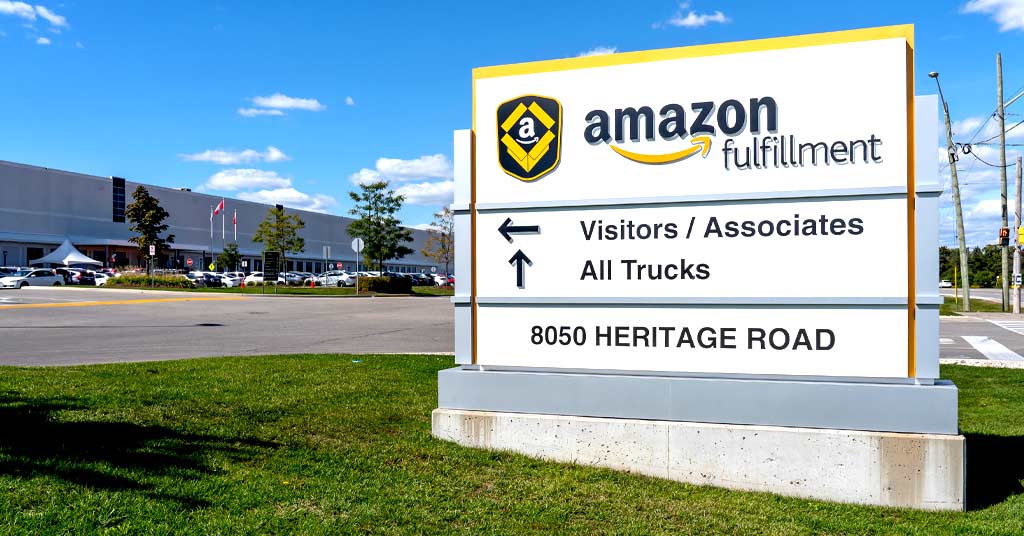
Amazon Ordered to Pay $5 Million After Over a Thousand Injuries Involving Ontario Warehouse Workers
New workplace injury data shows Amazon warehouses in Ontario were linked to over 1,300 injuries last year
New workplace injury data from an Ontario crown agency shows Amazon was ordered to pay out nearly $5 million in connection with over 1,300 workplace injuries last year.
According to health and safety data from Ontario’s Workplace Safety And Insurance Board, Amazon Canada Fulfillment Services ULC saw a sharp increase in workplace injuries since the start of the pandemic – up significantly from $1 million in 2019.
Workplace injuries at Amazon’s Ontario warehouses have more than tripled since the beginning of the pandemic
In 2019, Amazon Canada Fulfillment Services, the corporate entity that operates Amazon’s “fulfillment centre” warehouses, had 432 total allowed injury claims. This rose significantly to 570 in 2020, 980 in 2021 and 1330 in 2022.
According to the data set, the largest share of these injuries (22%) were lower-back injuries and 62% were sprains and strains.
All told, the data shows Amazon paid out $1.4 million to injured workers in 2020, $2.7 million in 2021 and $4.4 million in 2022 – totalling $8.5 million since the start of the pandemic.
Workers’ groups say injuries reflect hazardous working conditions at Amazon’s warehouses
David Newberry, legal worker with the Injured Workers Community Legal Clinic, told PressProgress the spike in injuries reflects Amazon’s hazardous working conditions.
“Not only does it show a disregard for the safety of workers,” Newberry said, “it shows that a growing issue is being ignored or improperly addressed, and that workers are increasingly thought of simply as disposable parts.”
Amazon’s workers have long complained that the pressure to scan items and process orders pushes them to neglect safety.
Last year, PressProgress obtained leaked documents showing how Amazon sets its productivity monitors at 75th percentile – ensuring that 25% are always falling behind and forcing all others to speed up.
NEW: Leaked documents show how Amazon’s automated systems force Canadian warehouse workers to scan boxes faster or face ‘termination’.
“You’re never able to shut off that voice in your head that’s telling you ‘you’re not working fast enough’.”https://t.co/vRpa0wCvlM #canlab
— PressProgress (@pressprogress) November 29, 2021
Amazon says it is unable to “fact-check” public WSIB data on workplace injuries
In a statement, Maureen Lynch Vogel, head of Global Public Relations and Media Relations for Amazon, said the publicly-sourced data from the WSIB does not provide her with “enough information to fully fact-check” workplace injuries at Amazon’s Ontario facilities.
“Yes, we have access to our own data,” Lynch Vogel told PressProgress. “As you can imagine, we have a lot of data and people working across multiple time zones.”
“Health, safety, and wellbeing of our employees is our top priority,” Lynch Vogel added. “We’ve invested hundreds of millions over the last few years into new safety measures, and injury rates have declined across our global network.”
“While there’s always room for improvement, we’re encouraged with the progress we’re making.”
Amazon also insists its increase in injury claims may be caused by its workforce growth through the pandemic: “Over the last few years, we’ve added more than 12,000 new employees in Ontario alone, so it’s natural that the number of these claims would increase even if the overall injury rates stay flat,” Lynch Vogel said.
But Newberry says even the WSIB data likely underreports the actual rate of injuries at Amazon.
“These numbers only include injuries that are reported by workers and allowed by the WSIB,” Newberry said. “For example, we know that Amazon objects to most or all injury claims that their staff file with the compensation Board – something that Ontario’s compensation system financially incentivizes them to do – which likely artificially deflates the injury numbers.”
Previously, the Toronto Star reported a huge discrepancy between the number of injuries Amazon reported to US officials and those Amazon reported in Canada.
Prior to the pandemic, The Star found Amazon challenged almost 80% of serious injury claims filed in this period, arguing “no proof of accident,” an “unclear mechanism of injury” or a “pre-existing condition.”
Our journalism is powered by readers like you.
We’re an award-winning non-profit news organization that covers topics like social and economic inequality, big business and labour, and right-wing extremism.
Help us build so we can bring to light stories that don’t get the attention they deserve from Canada’s big corporate media outlets.
Donate



